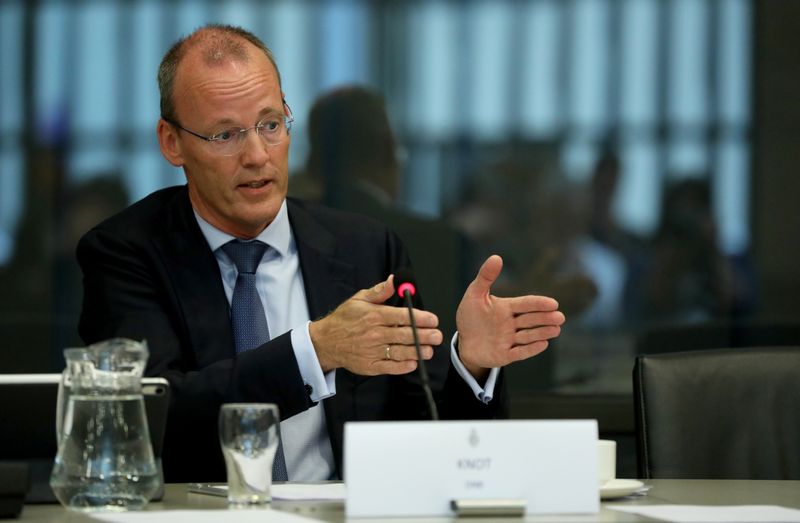FRANKFURT (Reuters) - The European Central Bank should make a clearer distinction between instruments used to guide inflation and those aimed at stabilising financial markets, Dutch central bank chief Klaas Knot said on Thursday.
A quick succession of crises over the past decade, from ultra low inflation to the pandemic and then an inflation surge, forced the ECB to invent new instruments and many blurred a principle that policy tools should be separated from those used for financial stability.
"Going forward, we may want to separate instruments that steer the stance from those that support transmission," Knot, the longest serving member of the ECB's Governing Council said in a speech in Paris.
"Distinguishing the monetary stance from safeguarding monetary transmission makes sense because these operations may have to be implemented in opposite directions," Knot added.
In the newest reincarnation of this 'separation principle', the purpose of an instrument should no longer be defined as 'liquidity creation', but it should be done based on its purpose: steering monetary conditions versus safeguarding a homogeneous transmission, Knot said.
Discussions on how the ECB uses some instruments is heating up as the bank is gearing up for a strategy review next year and seeks to digest the lessons from the recent bout of inflation.
One key issue that will come up is how to use bond purchases, the ECB's go-to instrument for most of the last decade.
While bond buys can quickly stabilise markets, the debt stays on the bank's balance sheet for an extended period and the ECB, which has struggled to bring down inflation recently, is still sitting on trillions of euros worth of debt bought when inflation was low.

Some economists, like ECB board member Isabel Schnabel, argue that short and temporary purchases should remain in use but extended buys, commonly called quantitative easing, should be used with greater caution given their long term side effects.
Knot said that the Transmission Protection Instrument, which could be used to temper disorderly and unwarranted increases in borrowing costs, is a good example for how tools could be separated, since the mere existence of this backstop calmed markets and allowed the ECB to raise interest rates.